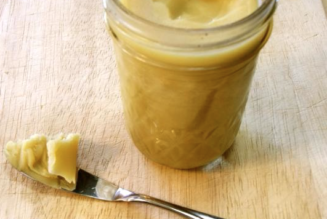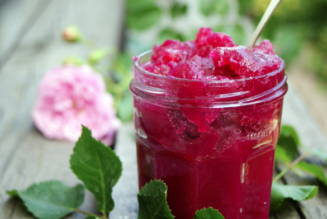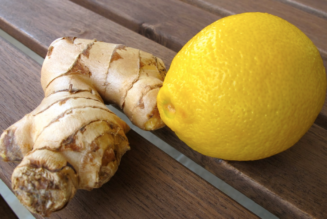The Wonderfully Interesting Rhubarb
Rhubarb is a wonderfully interesting vegetable … fruit … herb? Of course there are many discussions of where to place rhubarb, as it has been classified as both a fruit and vegetable. It is, however, an ancient plant that was originally imported from China and Tibet. It has an incredibly tart taste, because of which, it is frequently used with sweet dishes and is therefore classified as a fruit. However, technically it is a vegetable and has been used popularly as such around the world.
The rhubarb plant is a perennial which grows most abundantly in the Himalayans. The root of the rhubarb is used for medicinal and dietary purposes. However care must be taken when using the leaves – they are known to be poisonous. There are certain precautions to be aware of when using rhubarb. It has wonderful laxative properties, but because of this, there can tend to be reliance on the plant for bowel movements, and should be used only short term.
Super Easy Dessert Recipe – Rhubarb Crumble
Contraindications
- Pregnancy and breastfeeding
- Emodin is a resin found in rhubarb which can be transmitted to infants during pregnancy and breastfeeding
- Gout – The oxalic acid content in rhubarb can affect individuals with gout
- Intestinal obstruction and inflammation of unknown origin
- Diarrhea
- General debility
- Anemia – as it can reduce iron absorption
- Cardiac issues
- Hyperkalaemia – can be further aggravated by potential loss of electrolytes
Despite some of these contraindications, when used correctly, rhubarb has wonderful healing properties. It is particularly beneficial in pitta and kapha conditions but can aggravate vata in excess. It has an affinity for the digestive, excretory and circulatory systems. It is a fantastic blood purifier in addition to its laxative effects.
Organic Digest Tone (Triphala Plus)
Good health depends on strong, efficient digestion.
Properties
Rhubarb is light, dry and penetrating with a bitter, astringent and pungent taste. It has a cooling effect in the body and its post digestive effect is also pungent. It is very effective on the plasma, blood and fat tissues.
Some indications, amongst others, include:
- Constipation and Diarrhea – its action is dependent on dose.
- Removing toxins
- Dysentery
- Abdominal tumors and obstructions
- Hepatitis
- Cirrhosis
- Liver congestion
- High cholesterol
- Obesity
- Endometriosis
- Fibroids
- Dysmenorrhea
- Ulcers
- Hemorrhoids
- And many more!
As mentioned above, it is important to be aware of the contraindications of rhubarb. Always seek a physician’s advice before undertaking herbal supplementation.
Usage
There are many combination compounds that involve rhubarb to address certain conditions. Some being:
- Rhubarb and ginger, fennel, peppermint for gripe
- Rhubarb with psyllium husk, licorice and hemp seed for dry colon
- Rhubarb with shatavari, amalaki and manjistha for high pitta and gastrointestinal tracts ulcers
- Rhubarb and turmeric, myrrh and pippali for ama in female reproductive stagnation issues
There are numerous recipes which use rhubarb and it is used abundantly in many sweet fruit dishes. It is well used with strawberry in a pie. However personally, I prefer the rhubarb in a crumble. Here is my recipe – feel free to adjust according to taste!
~Rhubarb Berry Crumble~
Ingredients
- ¼ cup of ghee
- 1 cup of flour
- (all-purpose flour is most popular but can substitute other types)
- ½ cup of coconut sugar (or your choice of sweetener)
- note: not honey as it shouldn’t be heated
- ¼ cup of turbinado sugar
- ¾ cup of mixed berries
- ½ cup of chopped rhubarb roots (NOT leaves)
- Pinch of rock salt
- ¼ tsp of cinnamon
- ¼ tsp of cardamom
- ¼ tsp of fennel seeds
- 1 tsp of vanilla essence
Steps
1. Place the turbinado sugar and the chopped rhubarb into a saucepan with the vanilla essence. Let simmer for about 15 mins until soft.
2. Preheat the oven to 375 degrees Farenheit.
3. Place rhubarb mixture along with the rest of the berries and the fennel seeds in an ovenproof dish
4. To prepare the crumble, mix together the flour, coconut sugar, spices and salt. Gently using your fingers add the ghee until large crumbs are formed.
5. Sprinkle crumble onto the berry rhubarb mixture and bake in oven for 35-40 mins until crumble is crispy and fruit juices are bubbling.
6. Enjoy with a mint leaf!
Note: this recipe can be varied and adjusted according to taste.
References
- Lad, V. (2002). Textbook of Ayurveda. Albuquerque, N.M.: Ayurvedic Press.
- Lad, V., & Frawley, D. (1986). The yoga of herbs: An Ayurvedic guide to herbal medicine. Santa Fe, N.M.: Lotus Press.
- Pole, S. (2013). Ayurvedic medicine the principles of traditional practice. London: Singing Dragon.
- Green, J. (2000). The herbal medicine-makers’ handbook a home manual. Berkeley, Calif.: The Crossing Press.
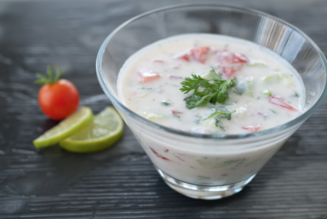
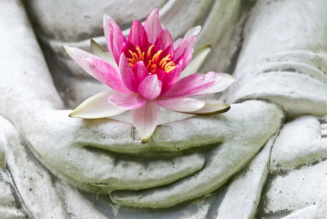
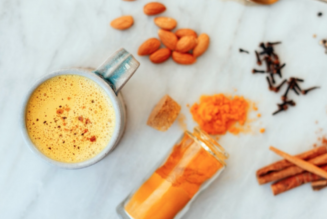
![Female Health: Amenorrhea [cessation of menses] – An Ayurvedic Perspective](https://healthyayurveda.com/wp-content/uploads/2015/07/1.-Amenorhea--327x219.png)

